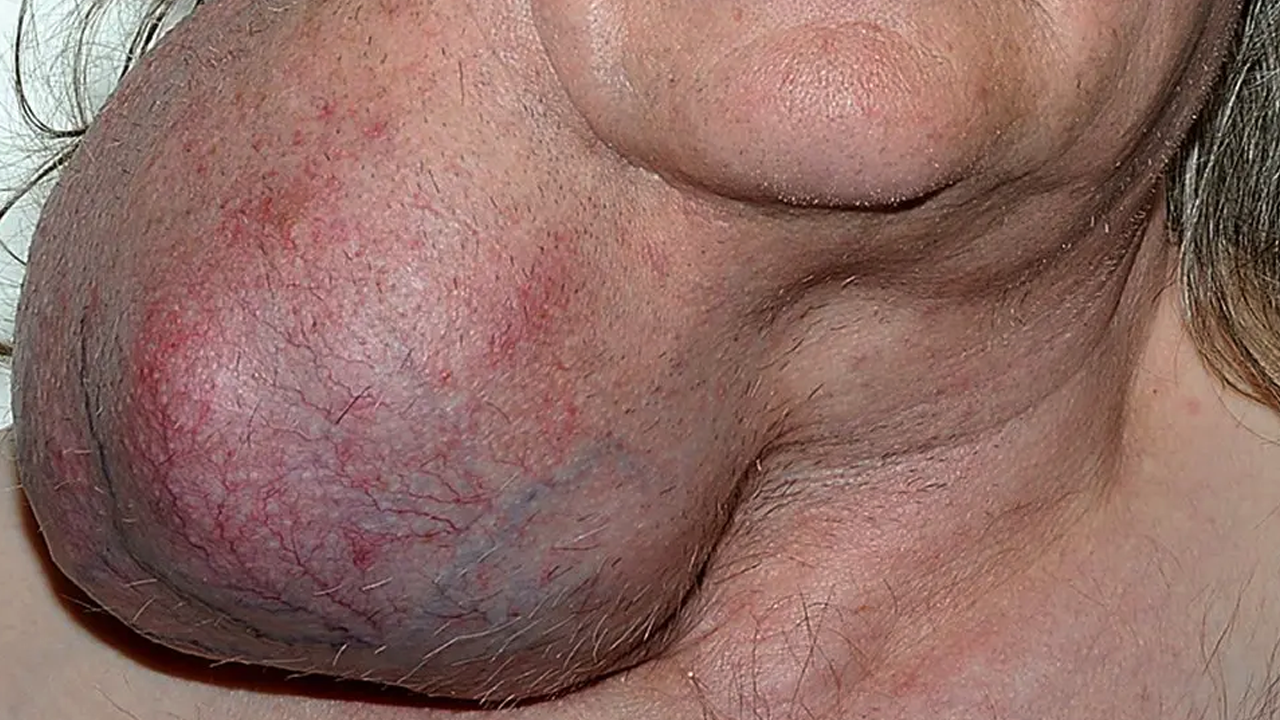Here’s a breakdown of how a giant deep back abscess should be evaluated and managed:
🚨 First: Urgent Medical Attention
A giant, deep abscess is a serious condition that requires urgent medical care. Attempting to treat it at home can lead to:
-
Sepsis (life-threatening infection)
-
Deep tissue or bone infection (osteomyelitis)
-
Chronic sinus tracts or fistulas
🩺 Medical Management Steps
1. Clinical Evaluation
-
Done by a doctor (often general surgeon, infectious disease specialist, or wound care specialist)
-
May include imaging: ultrasound or CT scan to assess depth and involvement with muscle or bone.
2. Incision and Drainage (I&D)
-
Gold standard for abscess treatment
-
Performed in sterile conditions
-
Drain is often left in place for large/deep abscesses
-
Wound is packed or left open to heal from the bottom up (secondary intention)
3. Antibiotics
-
Usually prescribed after culture of the pus
-
Broad-spectrum antibiotics started empirically, then adjusted
4. Wound Care
-
Frequent dressing changes
-
May require negative pressure wound therapy (wound vac)
-
Close follow-up with wound care team
5. Investigate Underlying Causes
-
Diabetes
-
Immunosuppression
-
Chronic skin infections (hidradenitis suppurativa)
-
Recurrent trauma
⚠️ When to Go to the ER
If you or someone has:
-
Fever/chills
-
Rapidly expanding redness/swelling
-
Foul-smelling drainage
-
Confusion or fatigue
-
Worsening pain
Go to the emergency department immediately.
🩺 Medical Management of Large, Deep Back Abscesses
1. Incision and Drainage (I&D) Procedure
For sizable or deep abscesses, incision and drainage (I&D) is the primary treatment. This procedure involves:
-
Preparation: Sterilizing the area with povidone-iodine or chlorhexidine solution. Administering local anesthesia around the abscess site.
-
Incision: Making a linear incision with a no. 11 or 15 blade to allow for adequate drainage. It’s crucial to ensure the incision is wide enough to prevent recurrence.
-
Drainage: Allowing purulent material to drain, followed by gentle probing to break up loculations. Manual expression of pus may be performed.
-
Packing: Inserting sterile gauze into the abscess cavity to promote continued drainage and prevent premature closure.
2. Antibiotic Therapy
Post-procedure, antibiotics may be prescribed, especially if:
-
The patient has systemic symptoms like fever.
-
There are signs of cellulitis or surrounding tissue involvement.
-
The patient is immunocompromised.
Commonly used antibiotics include:
-
Cephalexin or dicloxacillin for non-MRSA infections.
-
Clindamycin or trimethoprim-sulfamethoxazole (TMP-SMX) for suspected MRSA infections.
A wound culture may be obtained to tailor antibiotic therapy appropriately.
3. Wound Care and Follow-Up
After drainage, proper wound care is essential:
-
Dressing Changes: Regularly change dressings to keep the area clean and dry.
-
Packing Removal: If gauze was used for packing, it should be removed carefully as directed by a healthcare provider.
-
Monitoring: Watch for signs of infection, such as increased redness, swelling, or pus drainage.
Follow-up appointments are crucial to ensure proper healing and to address any complications promptly.
4. Potential Complications
Without proper treatment, large abscesses can lead to:
-
Recurrence: Incomplete drainage can result in the abscess returning.
-
Fistula Formation: Chronic abscesses may develop into sinus tracts or fistulas.
-
Systemic Infection: Untreated infections can lead to sepsis, a life-threatening condition.
Therefore, timely and appropriate medical intervention is essential.
🚫 Why You Shouldn’t Attempt This at Home:
A large, deep (“bottomless”) abscess:
-
Can involve muscle, fascia, or bone
-
May contain multiple pockets (called loculations) that require breaking up surgically
-
May be caused by MRSA or other dangerous bacteria
-
Can lead to sepsis if not properly treated
Attempting to drain or treat it at home can:
-
Miss deep infection
-
Worsen the condition
-
Lead to permanent tissue damage or life-threatening complications
✅ What You Can Do:
1. Go to a Hospital or Urgent Care Immediately
Ask for:
-
Incision and drainage by a physician or surgeon
-
Wound culture for targeted antibiotics
-
Imaging (like ultrasound or CT) if needed
2. Bring This Information With You
If you’re not sure how to explain the issue, you can show the healthcare provider this:
“I have a very deep abscess on my back that is not healing. I’m concerned it may be infected deeply or involve multiple pockets. Can I be assessed for incision, drainage, and possible imaging?”
3. Aftercare
Once it’s treated, proper aftercare includes:
-
Wound cleaning and packing changes (may need home nurse care)
-
Antibiotics as prescribed
-
Good hygiene and wound monitoring
